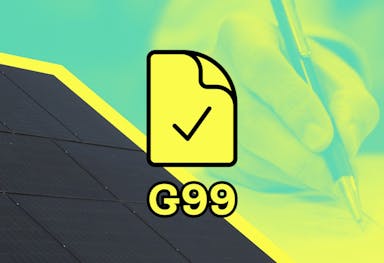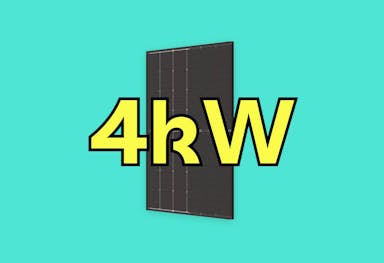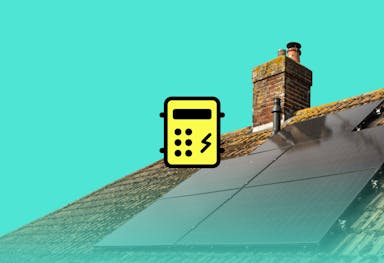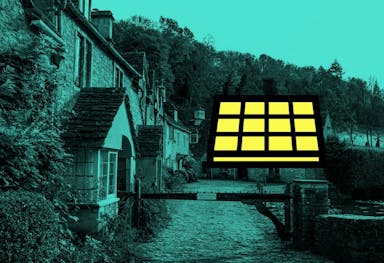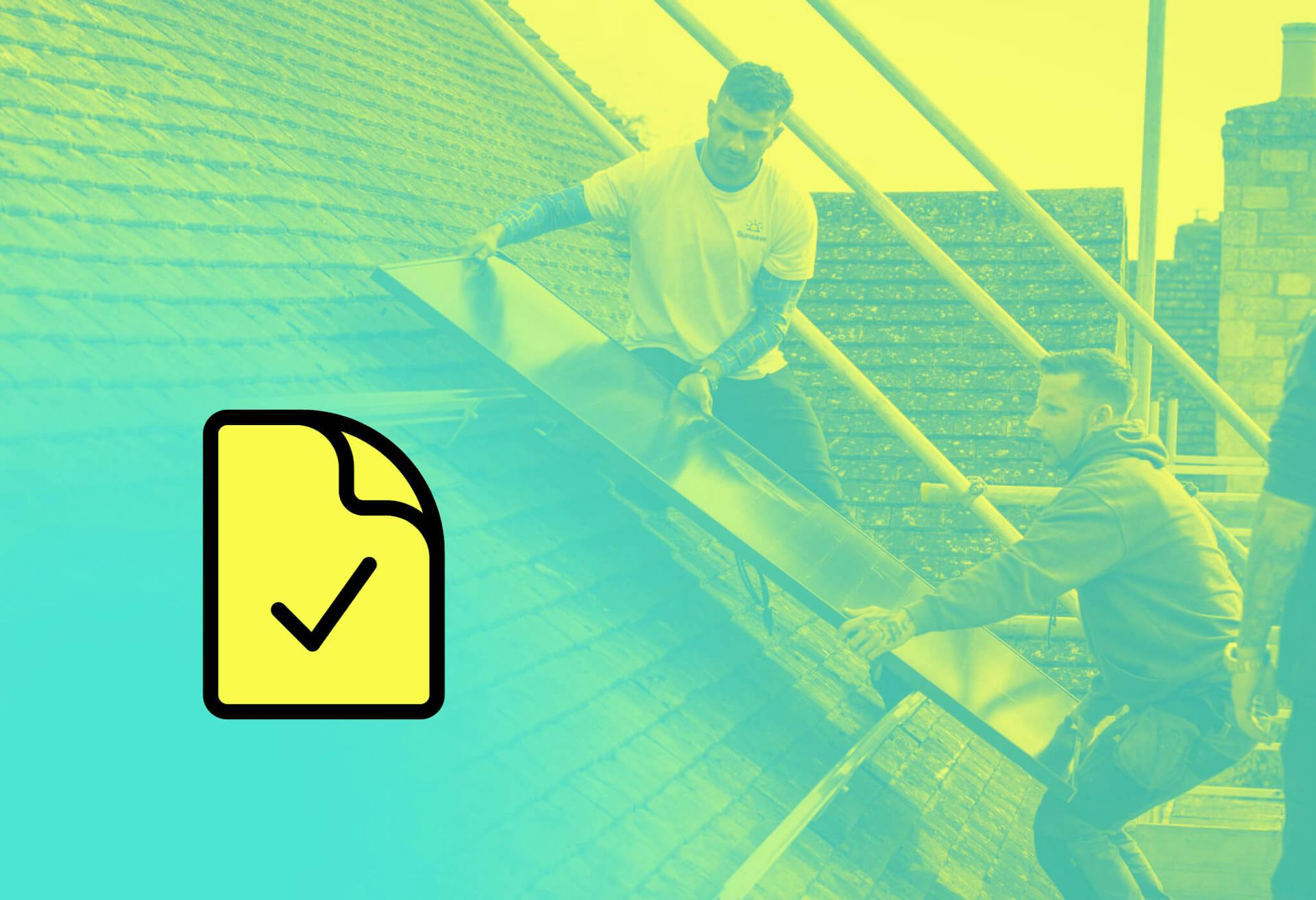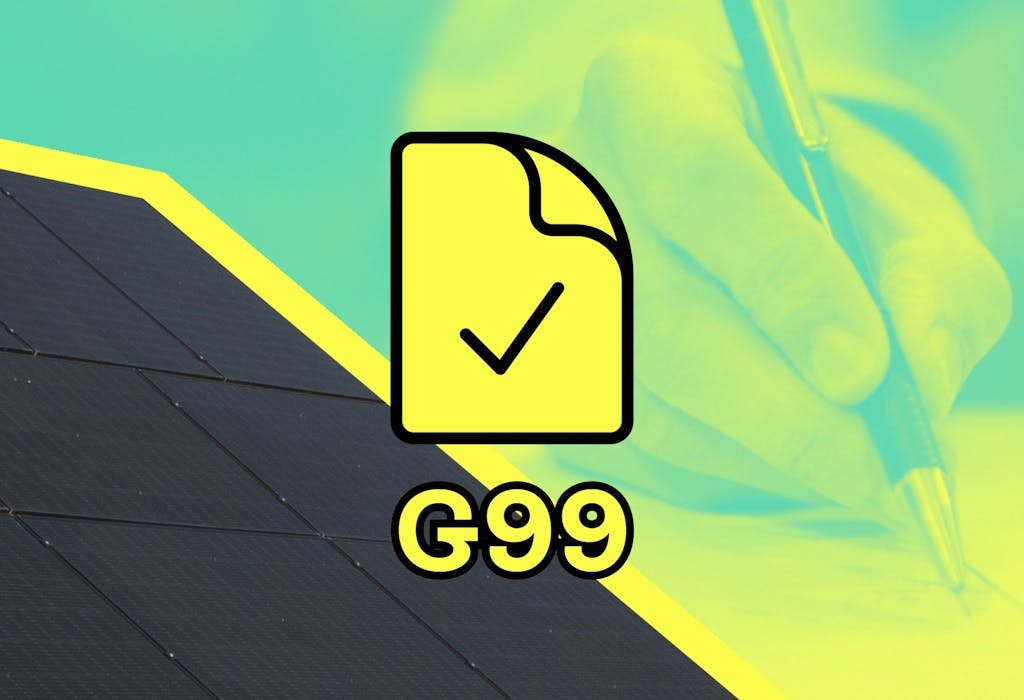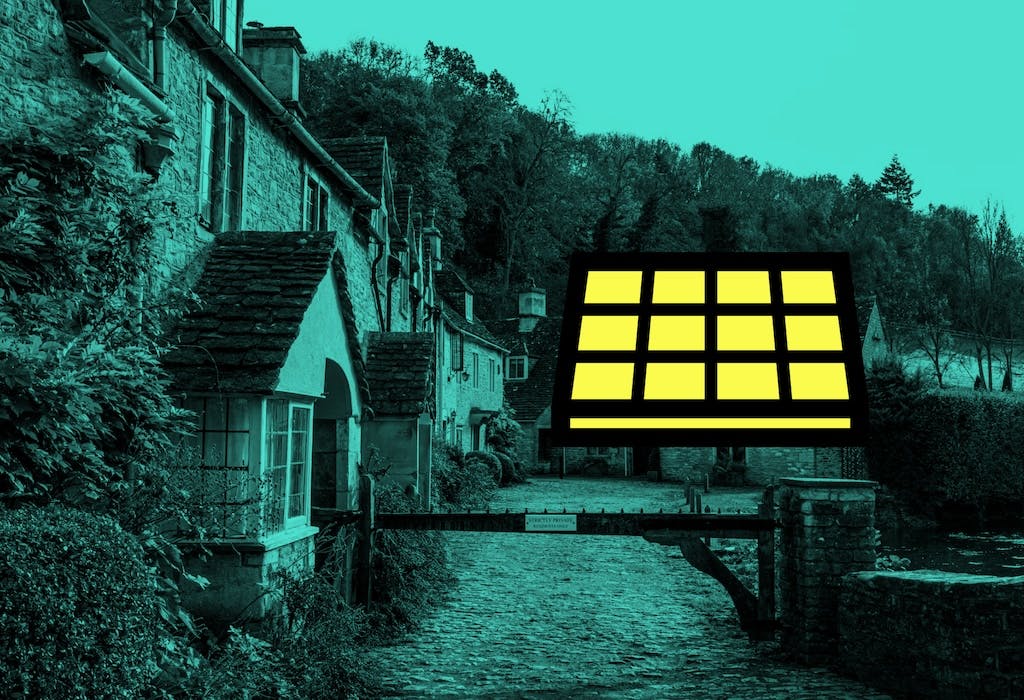- Solar advice hub
- Planning-permission
- Is there a maximum number of solar panels allowed in the UK?
Is there a maximum number of solar panels allowed in the UK?
Find out whether there is any limit on the number of solar panels – or other solar gear – you can have installed at your home.


Why you can trust our content
We know that the solar industry is full of misinformation, but we only use reliable sources, including:
- Our experienced solar experts, installers and system designers
- Our own database of solar & battery system designs
- Authoritative bodies like MCS and the UK government



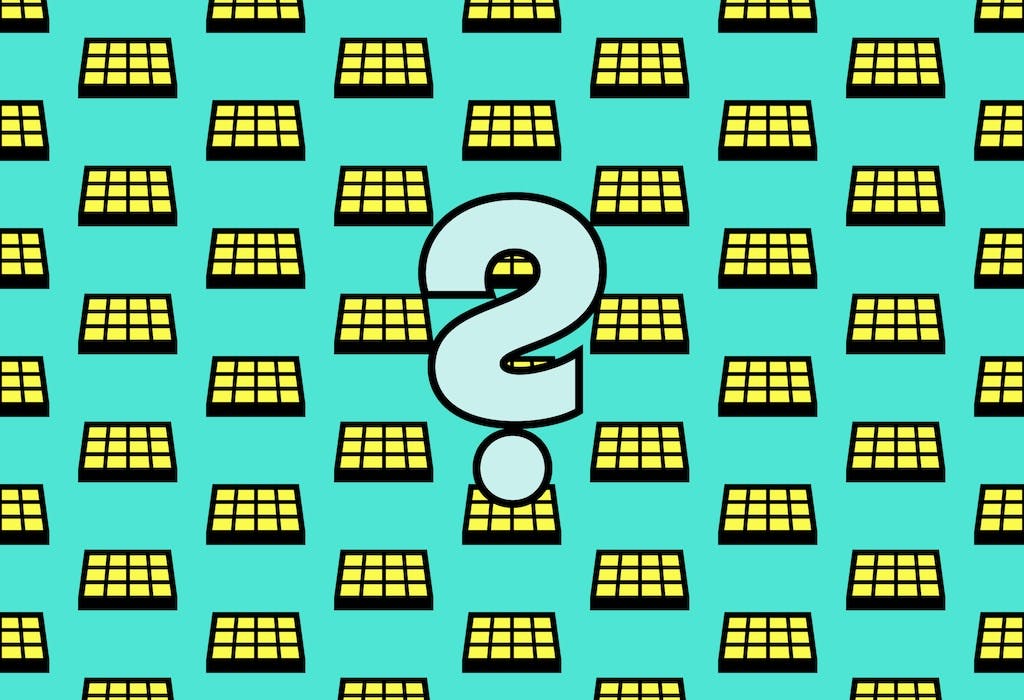
Calculate savings
What kind of home do you live in?
Calculate savings
What kind of home do you live in?
At a glance
If you’re thinking of switching to solar, you’re probably wondering how extensively you can cover your roof with solar panels.
Given you’ll be paying the fixed costs of scaffolding and installation, it makes sense to make full use of your property’s roof space.
In this guide, we’ll explain how many solar panels you can have before you start dealing with various practical considerations, building regulations and DNO requirements.
If you’re interested in finding out how much a solar & battery system could save you, answer a few quick questions below and we’ll provide an estimate for you.
Find out how much you can save
What kind of home do you live in?
What’s the maximum number of solar panels you can have in the UK?
Assuming your property doesn’t require planning permission for a solar installation, there is no legal maximum number of solar panels that you can install on your roof in the UK. Other than usable roof space, there is nothing limiting how many solar panels you can put up there.
Listed buildings and properties in conservation areas usually require planning permission for solar panels, but for the majority of other homes a solar installation counts as a ‘permitted development’.
However, it is a legal requirement of all rooftop solar panel installations that no panel sits closer than 400mm from the edge of the roof. This means you can’t actually cover every square inch of your rooftop.
If your rooftop isn’t suitable for some reason (e.g. it’s a flat roof, or completely north-facing) and you opt for a ground-mounted system, any system exceeding nine square metres requires planning permission.
So, while there's no hard limit on rooftop solar installations, practical considerations and regulations should guide your decision. Most typical three-bedroom or four-bedroom homes usually have systems that range from 4 kilowatts peak (kWp) to 6kWp.
To learn more, check out our guide to solar panel sizes and dimensions.
Is there a limit on how much solar electricity you can generate?
A solar panel system's capacity isn't limited to a certain number of panels, but there is a limit on the size of the system’s inverter.
The inverter is what converts the electricity from direct current (DC) to alternating current (AC), and consequently makes it usable in your home (or exportable to the grid).
You could have a vast solar panel array, but it’s the size of the inverter that will dictate the system’s actual output.
In the UK, any inverter larger than 3.68 kilowatts (kW) requires permission from the local Distribution Network Operator (DNO) before it can connect to the grid. To acquire this permission, you need to submit an application called a G99.
If the inverter is 3.68kW or smaller, you’re able to simply ‘connect and notify’ without needing permission (this is called a G98).
For systems with inverters larger than 3.68kW, Sunsave will fully manage the DNO application process on your behalf.

The UK's first solar subscription
- No upfront cost
- Fixed monthly fee
- 20-year Sunsave Guarantee
Why is there a limit on solar PV output?
The limit on output from domestic solar inverters is in place to prevent issues with grid stability.
Any time a home starts to export large amounts of electricity to the grid, it can cause fluctuations in voltage and frequency across the network.
While one household is unlikely to make much difference, it wouldn’t take many unregistered systems to create a substantially higher likelihood of instability and blackouts.
The National Energy System Operator (NESO) constantly keeps the UK grid’s frequency at around 50 hertz, which allows every electrical device in the country to work.
Very slight deviations in this frequency are acceptable, but unexpected influxes of electricity – for example from unknown domestic systems – can result in large spikes.
Every DNO is tasked with monitoring its region and ensuring that new electricity sources can export to the grid without destabilising the entire network.
By regulating this output, grid operators can make sure everyone gets a reliable supply of electricity.
How do you apply to your DNO for permission?
The solar panel installation process typically involves submitting an application with details of your plans to your local DNO to ensure grid compatibility and safety.
In the UK, there are six DNOs covering 14 different district networks:
- Electricity North West Limited
- Northern Powergrid
- Scottish and Southern Energy
- ScottishPower Energy Networks
- UK Power Networks
- Western Power Distribution
To find out who your local DNO is, you can use the Energy Networks Association search tool.
And for more information, check out our guide to DNO solar applications.

How likely is DNO approval?
The majority of solar panel systems that require a G99 application are accepted, but some DNOs will ask for an additional fee in order to cover any necessary grid work.
This work can include transformer upgrades, new cables, and other equipment to ensure the grid can reliably accommodate the solar exports from your system.
However, if your inverter is smaller than 3.68kW then you won’t need to worry about any extra fees, as you can just connect to the grid and start exporting immediately.
How long does DNO approval take?
DNO approval for solar panel systems typically takes around four to eight weeks.
During this time, your local DNO will assess the proposed system's impact on the local grid and decide if any upgrades are necessary to accommodate your potential solar exports.
The time frame might be affected by things like how complicated the application is and how busy the specific DNO is.
However, your solar installer should be familiar with each DNO’s approval process and take all the necessary steps to keep things moving forward.
Could you choose not to connect to the grid?
While it's technically possible to go "off-grid" with a solar & battery system, choosing not to connect your system to the grid isn't recommended. A grid connection is essential for reliability, flexibility, and financial benefits.
For instance, without a grid connection, you'd have no access to grid-supplied electricity during times of low solar generation, which means you'll need to rely solely on battery storage to power your home. This can be costly and may require a larger, more complex battery system.
Also, you won't be able to export excess electricity, which means you'll miss out on potential earnings from the best solar export tariffs that can help offset the cost of your solar panel system over time.
Missed export income is one of the main reasons why we don’t recommend DIY solar installations.
Verified expertIf you want to go fully off-grid with solar panels, you’ll have to rely on a massive battery, which will be extremely expensive. In the vast majority of cases, keeping your solar connected to the grid is a much smarter approach financially.
Andrei Stavila
Technical Manager at Sunsave
Andrei has worked in residential solar installation for more than 17 years, and is a fully qualified electrical engineer.
How many solar panels can you fit on your roof?
You should be able to fit a large enough number of solar panels on your roof to make the investment worth it.
A solar panel generally takes up around 2m², though a good installer will also leave around 3cm of space between each panel, and 40cm on every side of the system as a whole.
This matches up with the guidance from certification schemes like Microgeneration Certification Scheme (MCS) and Flexi-Orb.
This means each panel will require slightly over 3m² of space – for instance, if you want a system with 15 panels, your roof’s area must be at least 46.71m².
If you have a chimney, skylight, or vent pipe, this will reduce the amount of roof space you can use for solar panels – but not by much. Homes with one each of these items will only lose around 0.81m².
And fortunately, houses in this country generally have plenty of room for solar panels. As a rough indicator, a semi-detached home in the UK usually has around 65m² of roof space.
Not all of this may be usable, but you should still have more than enough space to benefit enormously from going solar.
Can you have too many solar panels?
You can’t have too many solar panels, since every extra one means more savings for your household, as long as they’re properly installed on your roof.
Any excess electricity your system produces can be stored in your battery to be used later or sold to the grid for one of the best rates on the market. Either way, you can make hundreds of pounds per year in extra revenue.
It’s also not particularly expensive to get more panels. Once you’ve decided to go solar, your priciest installation costs, like scaffolding and labour, are more or less fixed. Each extra panel won’t add much to your total.
Here are the key reasons to get as many solar panels as possible:
- The majority of the cost doesn’t change
- You can benefit from lucrative export tariffs
- A larger system prepares your home for a more electrified future
- It can boost your property’s value
For more information, check out our reasons to get a larger solar panel system.
Single phase vs three phase solar installations
‘Single-phase’ and ‘three-phase’ are different sizes of electricity supply feeding from the grid into a property.
Single-phase means the property receives electricity through one wire, which the vast majority of UK households have.
In a three-phase setup, the property receives electricity through three separate wires. This is far less common, and is only necessary for commercial buildings and households that use a huge quantity of electricity.
Three-phase systems can deliver a higher sustained power output, making them better suited for heavy machinery or larger electrical loads.
The electricity generation limit in the UK is 3.68kW per phase, but single-phase properties are so common that it’s almost always the same as just saying 3.68kW.
However, if your property has a three-phase system, you could have an inverter as big as 11.04kW before requiring DNO permission.
If you’re not sure whether you have a single-phase or three-phase power supply, take a look at your electrical fuses. Single-phase supplies will have one fuse, whereas three-phase supplies have three.
Can you add more solar panels to your system later on?
You can add more solar panels at a later date, but it's more cost effective to plan ahead and get a bigger system installed upfront, so you avoid paying twice for fixed costs like labour and scaffolding.
Installers need scaffolding to get up onto your roof safely, and its setup/take-down costs can be a sizable chunk of the total expense.
When you install a larger solar panel system, you can split the fixed costs among more panels, which ends up reducing the cost per panel.
Next steps
Installing solar panels offers many benefits, and it makes financial sense to get as many panels as possible once your scaffolding is set up.
Providing the panels don’t sit closer than 400mm from the edge of your rooftop, you can install as many panels as you want.
Wondering how much a solar & battery system could save you? Simply answer a few questions below, and we’ll provide you with an estimate.
Find out how much you can save
What kind of home do you live in?
FAQs
Related articles

Written byMelody Abeni
Based in London, Melody is a specialist green technology writer who has been covering sustainability, climate action and ESG for the past five years, after gathering operational experience in green investing and financial services. She has written for various industry publications, including renewable technology advisor The Eco Experts, and she holds a Master’s degree in law from Birkbeck University.




